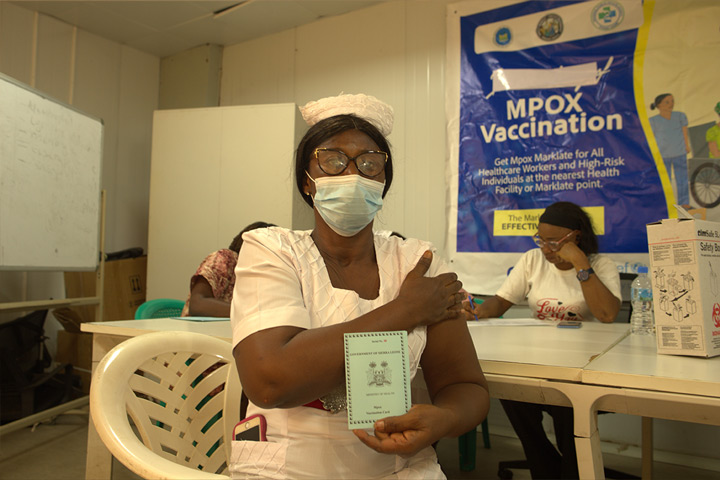Six things you need to know about this year’s brutal flu season
With flu cases spiking across the globe, here are the main things to know about this common but potentially dangerous disease.
- 17 February 2025
- 4 min read
- by Priya Joi

1. Countries from India to the US are seeing unusually high spikes in flu cases
India is experiencing its worst seasonal flu outbreak since the pandemic. Some hospitals in Bangalore in the south are reporting a 20% increase in respiratory infections compared to last year.
This comes as scientists have identified a previously unseen mutated version of the H5N1 bird flu virus in an Australian child who had travelled to India.
The US is also experiencing the worst influenza season for 15 years and it shows no signs of slowing down, the US Centers for Disease Control and Prevention (CDC) has said. There have been at least 24 million cases, 310,000 hospitalisations and 13,000 deaths from flu so far this season.
2. In the US, flu deaths outpaced COVID-19 deaths for the first time since the pandemic
According to the CDC, in the week ending 25 January, nearly 1.7% of all deaths nationwide were attributed to the flu, compared to roughly 1.5% being the result of COVID-19 – this is the first time since the COVID-19 pandemic began that this has been the case.
One theory for this is that there are greater levels of immunity to circulating strains due to the summer’s intense COVID-19 wave. In addition, there seem to have been no new variants that are better at evading immunity than previous strains.
In the week ending 1 February, the number of emergency department visits with a diagnosis of influenza was 8%, compared with 1% of emergency department patients that were diagnosed with COVID-19 and 0.5% diagnosed with respiratory syncytial virus.
3. Vaccine uptake seems to have been lower than last year
The CDC reported that as of 30 November, just over a third of US kids – 37% – had gotten flu shots, down from 43% at the same time last year.
But the vaccine may also be slightly less effective this season. The flu vaccine changes year on year, based on scientists’ predictions of which the most dominant circulating strains will be.
An early CDC report in October 2024 suggested the flu vaccine’s effectiveness at keeping kids ages five and younger out of the hospital might be 39%. By contrast, last year’s shot was estimated to be up to 61% effective at preventing hospitalisation in kids.
Have you read?
4. Scientists are trying to develop a more effective flu vaccine
A vaccine that stimulates antibodies against different flu strains could trigger a much stronger immune defence, according to researchers from the US National Institutes of Health (NIH).
The surface of the flu virus is studded with a protein called haemagglutinin (HA). Seasonal flu vaccines include HA molecules from various viral strains, but even when the strains in the vaccine exactly match those in circulation, the vaccines tend to offer only 40–60% protection.
This is because most vaccinated people end up producing antibodies against only one of the vaccine strains. This might be because a previous infection to a particular flu strain primes the immune system to respond to that strain later, or it could be that a genetic variation in our immune systems affects the vaccine response.
In a study published in Science in December 2024, the NIH team linked HA molecules from different strains of flu together, hoping that the immune system would respond to any single strain it recognised and therefore paving the way for a vaccine that can tackle multiple types of flu.
Early studies in mice show this method could well be effective.
5. Co-infection with bird flu could ‘supercharge’ the virus
In places where bird flu is also circulating, scientists worry that if people get co-infected with both bird flu and seasonal human flu it could lead to mutations that create a ‘supercharged’ flu virus that could be more deadly than regular flu and spread more easily.
The CDC has said that, while the seasonal flu vaccine doesn’t protect against bird flu, by reducing the risk of seasonal flu, it “might reduce the very rare risk of coinfection with a human seasonal virus and an avian virus at the same time, and the theoretical risk that reassortment between the two could result in a new virus”.
6. The flu season could get worse before it gets better
In many places, including the UK and US, the flu season started unusually early. In the US there seems to have been a dip and then a second peak of flu activity this winter that is currently sending cases as high as they were in the first peak.
“You have to figure that at least as many deaths are going to be in the second half” of the year, said Dr Peter Hotez, Dean of the National School of Tropical Medicine at Baylor College of Medicine and co-director of the Texas Children’s Hospital Center for Vaccine Development. “We’re probably looking at a 20,000 to 30,000-death flu season. That’s pretty significant.”








